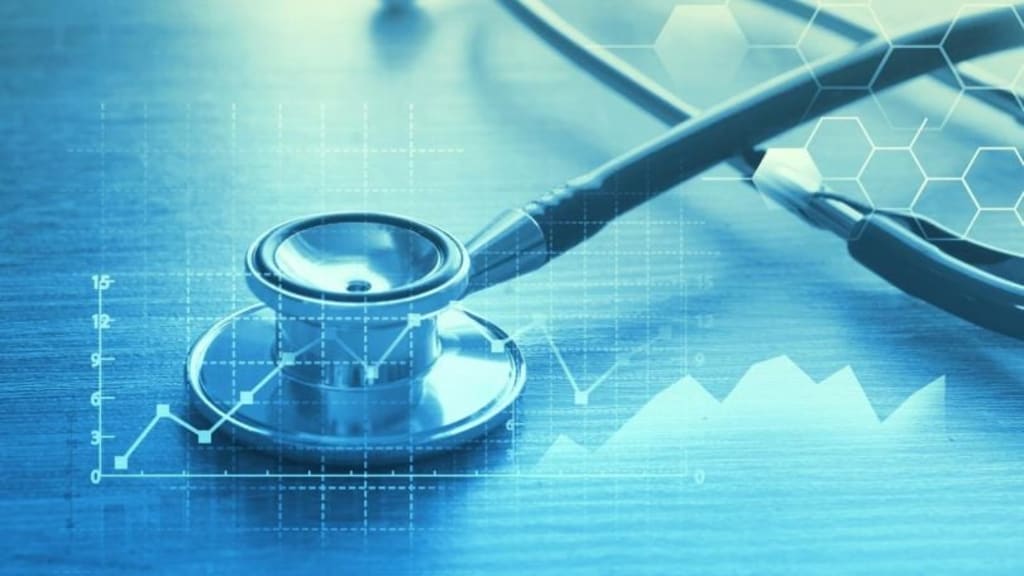Healthcare SoftwareTrends and Technologies
Adopting advanced healthcare software brings major changes to the healthcare industry from management to diagnosis.

Introduction
Healthcare software development is revolutionizing the medical industry by creating advanced applications designed to improve patient care, streamline operations, and enhance the efficiency of healthcare services. These software solutions range from electronic health records (EHR) and telemedicine platforms to patient management systems and diagnostic tools. By leveraging cutting-edge technologies, healthcare software not only addresses the unique challenges of the medical field but also ensures compliance with regulatory standards. This integration of technology is making healthcare more accessible, reliable, and personalized, ultimately leading to better patient outcomes and a more efficient healthcare system.
Key Trends in Healthcare Software Development
The healthcare software development landscape is rapidly evolving, driven by advancements in technology and the need for improved patient care and operational efficiency. Key trends include the rise of telemedicine and remote care, which have become essential in expanding access to healthcare services. Enhancements in electronic health records (EHR) are enabling better data integration and analytics, leading to more informed decision-making. The integration of artificial intelligence and machine learning is improving diagnostic accuracy and personalized treatment plans.
Mobile health applications are empowering patients to manage their health and communicate with providers more effectively. Additionally, blockchain technology is being explored for data security, ensuring the integrity of patient information. Emphasis on interoperability and cloud computing is facilitating seamless data sharing and collaborative care, while wearable technology and data analytics are enhancing real-time health monitoring and decision-making. These trends are shaping the future of healthcare software development, aiming to create more efficient, accessible, and patient-centric healthcare systems.
Rise of Telemedicine and Remote Care
Increased Accessibility: Telemedicine enables patients to consult with healthcare providers from anywhere, reducing the need for travel and making healthcare more accessible.
Virtual Consultations: Patients can receive medical advice and treatment through video calls, phone calls, and online messaging.
Remote Monitoring: Wearable devices and remote monitoring systems allow continuous tracking of vital signs and health metrics.
Cost Efficiency: Reduces healthcare costs by minimizing in-person visits and hospital admissions.
Improved Patient Outcomes: Early detection and intervention through remote monitoring improve patient health outcomes.
Expansion of Services: Addresses the needs of rural and underserved communities with limited access to healthcare facilities.
Patient Convenience: Enhances patient satisfaction by providing convenient and timely medical care.
Chronic Disease Management: Facilitates ongoing management of chronic conditions through regular remote check-ins and monitoring.
Evolution of Electronic Health Records
Electronic Health Records (EHR) have evolved to offer enhanced data integration, allowing seamless consolidation of patient information from various sources. Modern EHR systems feature user-friendly interfaces and advanced analytics tools to support better decision-making. Focus on interoperability ensures data sharing across different healthcare platforms, while improved data security protects sensitive information. Additionally, EHR systems now provide patients with easy access to their health records and include mobile-friendly options for healthcare providers. Continuous updates ensure compliance with evolving healthcare regulations and standards.
Patient Management Systems: Enhancing Efficiency and Care
Patient management systems streamline administrative tasks by automating scheduling, billing, and documentation, which improves efficiency. They optimize patient scheduling to reduce wait times and no-shows while maintaining centralized patient information for easy access. These systems enhance communication between patients and healthcare providers and facilitate efficient tracking of patient progress and follow-up care. Additionally, they improve resource allocation by managing staff and resources based on patient needs. Data analytics features help identify trends and enhance patient care strategies, and automated reporting ensures compliance with regulatory requirements.
Data Security and Compliance in Healthcare Software
Data security and compliance are paramount in healthcare software development. With the sensitive nature of patient information, robust measures are implemented to safeguard data integrity and confidentiality. This includes encryption protocols, access controls, and regular security audits to mitigate risks of data breaches and unauthorized access. Additionally, healthcare software must adhere to strict regulatory standards such as HIPAA and GDPR to ensure patient privacy and legal compliance. Compliance efforts often involve implementing audit trails, data retention policies, and procedures for breach notification to uphold regulatory requirements and maintain trust in the healthcare system.
Integration of Artificial Intelligence and Machine Learning
The integration of artificial intelligence (AI) and machine learning (ML) is transforming healthcare software, enabling advanced capabilities such as predictive analytics, personalized treatment recommendations, and improved diagnostic accuracy. AI algorithms analyze vast amounts of patient data to identify patterns and trends that may not be apparent to human clinicians. This data-driven approach enhances clinical decision-making, leading to more effective treatment plans and better patient outcomes.
Additionally, AI-powered tools can automate repetitive tasks, freeing up healthcare professionals to focus on more complex aspects of patient care. The continuous refinement of AI and ML algorithms holds immense potential for revolutionizing healthcare delivery, making it more efficient, accurate, and personalized.
Cloud Computing in Healthcare
Cloud computing has emerged as a game-changer in healthcare, offering numerous benefits such as scalability, cost-effectiveness, and accessibility of data. Healthcare providers are increasingly adopting cloud-based solutions to store, manage, and share patient information securely. Cloud platforms provide the flexibility to scale resources according to demand, ensuring optimal performance even during peak usage periods. Moreover, the pay-as-you-go model eliminates the need for large upfront investments in hardware infrastructure, making cloud computing a cost-effective option for healthcare organizations of all sizes.
Cloud-based healthcare solutions also facilitate collaboration among healthcare providers by enabling seamless sharing of medical records and diagnostic images across different facilities. However, concerns about data security and compliance remain significant, and healthcare organizations must implement robust security measures and adhere to regulatory standards such as HIPAA to protect patient privacy in the cloud. Overall, cloud computing is revolutionizing healthcare delivery by improving efficiency, accessibility, and collaboration among healthcare professionals.
Interoperability and Integration of Healthcare Systems
Interoperability and integration are pivotal in modern healthcare systems, ensuring smooth communication and data exchange across diverse platforms and providers. By fostering interoperable systems, healthcare organizations can efficiently access and share patient information, regardless of the software or hardware used, thus enhancing care coordination and patient outcomes. Integration consolidates data from various sources like electronic health records (EHR), laboratory systems, and imaging devices, providing a comprehensive view of patient health.
Achieving this demands adherence to standardized data formats and communication protocols, as well as collaboration to address challenges like data security and legacy system compatibility. The pursuit of interoperability and integration represents a crucial step towards improving healthcare delivery by streamlining processes, enhancing efficiency, and ultimately, advancing patient care.
Future Technologies to Watch
The future of healthcare holds exciting possibilities with emerging technologies poised to revolutionize the industry. Among these, blockchain development stands out for its potential to enhance data security and interoperability, ensuring the integrity of patient records while facilitating secure data sharing among healthcare providers. Virtual and augmented reality (VR/AR) are expected to transform medical training and patient education by providing immersive learning experiences and realistic simulations.
Additionally, the rise of wearable technology promises to enable real-time health monitoring and personalized care delivery, empowering individuals to take charge of their health. As these technologies continue to evolve, they have the potential to reshape healthcare delivery, driving innovation, improving outcomes, and enhancing the patient experience. Keeping a close watch on these future technologies is essential for healthcare organizations seeking to stay at the forefront of the industry and deliver high-quality, patient-centered care.
Conclusion
In conclusion, healthcare software development is rapidly advancing, bringing forth innovative solutions that enhance patient care, streamline operations, and improve overall efficiency in the healthcare industry. From telemedicine app development and electronic health records to artificial intelligence and cloud computing, these technologies are transforming the way healthcare is delivered and experienced.
As we look towards the future, emerging technologies such as blockchain technology, virtual reality, and wearable devices hold immense promise for further revolutionizing healthcare delivery. By embracing these advancements and prioritizing interoperability, security, and compliance, healthcare organizations can ensure that they are well-equipped to meet the evolving needs of patients and healthcare providers alike, ultimately leading to better outcomes and a more patient-centered approach to care
About the Creator
Lucas Andrew
Blockchain analyst and technical writer.
Enjoyed the story? Support the Creator.
Subscribe for free to receive all their stories in your feed. You could also pledge your support or give them a one-off tip, letting them know you appreciate their work.






Comments
There are no comments for this story
Be the first to respond and start the conversation.